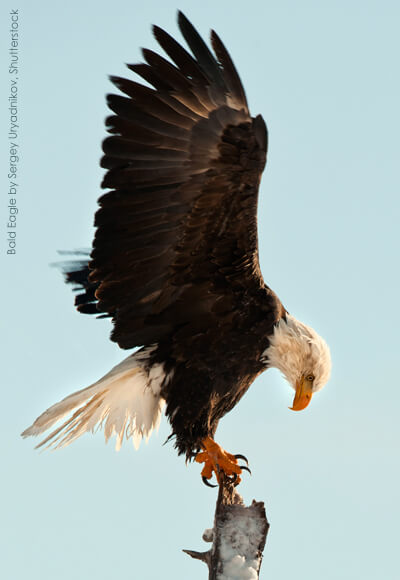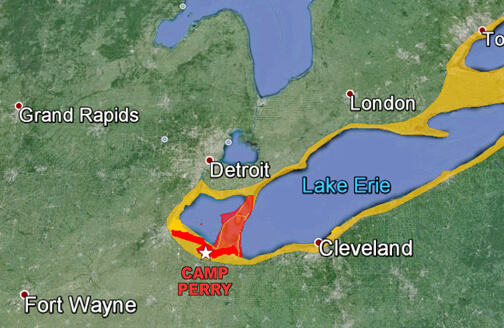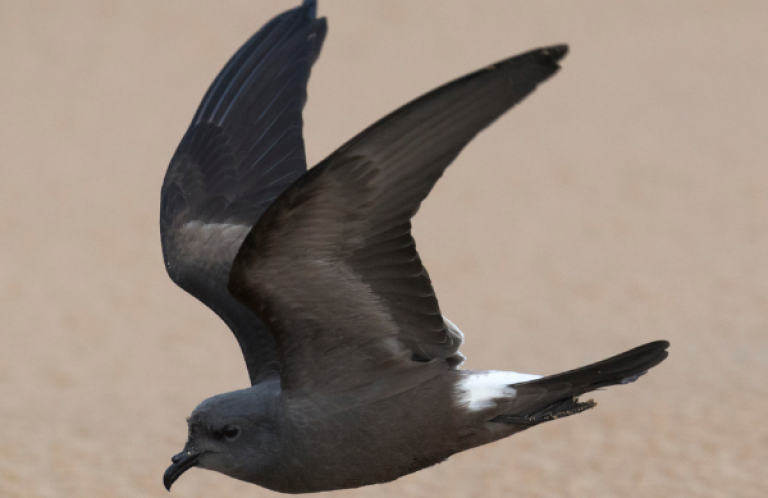Camp Perry Wind Turbine Project Halted Following Threat to Sue and Petition Campaign
 |
(Washington, D.C., January 29, 2014) One of several wind turbine projects planned for the shores of Lake Erie, in one of the greatest bird migration corridors in the Western Hemisphere, has been halted following submission of a letter of intent to sue from American Bird Conservancy (ABC) and Black Swamp Bird Observatory (BSBO). The two groups had vigorously opposed the project due to its exceptionally high risk to federally protected wildlife.
The announcement formalizing the decision to halt the project was made via a letter from Air National Guard Headquarters—the National Guard Bureau, Department of Defense, in Andrews, Md.—to the public interest law firm Meyer Glitzenstein & Crystal (MGC) of Washington, D.C, which represents ABC and BSBO.
The petition campaign and letter of intent to sue the Ohio National Guard (ONG)), along with an ongoing petition campaign that has acquired over 5,000 signatures, charged that efforts in connection with the wind project at Camp Perry Air National Guard Station west of Port Clinton, Ohio, violate the Endangered Species Act (ESA) and other federal conservation and environmental laws.
The letter from the National Guard Bureau states: “After carefully considering your objections … I have decided to withdraw the FONSI (Finding of No Significant Impact) for the project effective immediately. … Since the FONSI has been withdrawn, the project will not go forward at this time.” The letter was dated Jan. 28 and was signed by Colonel Peter A. Sartori, Director, Installations and Mission Support.
"The victory sends a strong message to other wind energy developers in this ecologically sensitive region that conservationists will be closely watching their actions. This is a heartening outcome for the environment and for birds,” said Dr. Michael Hutchins, National Coordinator of ABC's Bird Smart Wind Energy Campaign. “While we support wind energy as a sustainable energy source, we insist that turbines be sited where their impacts to birds and other wildlife can be minimized. This project was among the worst we have seen in that regard. We applaud the government's decision to reconsider this project.”
“We are absolutely elated that the Air National Guard has halted this project, at least temporarily and possibly for good,” said Kimberly Kaufman, Executive Director of BSBO. “We certainly owe thanks to the thousands who voiced their opposition to the project via the petition.” Kaufman points out that the petition will remain open to allow those who still want to sign on to do so. “We want to document the full extent of the opposition to this—and similar projects in this area—in the event the project is reconsidered in the future,” she added.
"This is a big win for the vast numbers of birds that migrate through the Camp Perry area, which have been using these routes and stopover habitats for centuries,” said Kenn Kaufman, internationally acclaimed author of bird field guides and a local resident. “It's also a win for the local economy and for the businesses that rely on tourism dollars from the tens of thousands of visiting birders. Let's hope that the suspension is a permanent one.”
“By indefinitely suspending this project, the agency has validated the serious environmental concerns raised in our letter and ensured that Lake Erie's migratory bird populations will continue to be afforded their rightful protections under the law,” said Bill Eubanks, partner at MGC.
But Sartori's letter does leave open the possibility that the issue may not be completely resolved. It states further that " … staff at the National Guard Bureau will review and coordinate the Environmental Assessment [of the project] and all supporting documentation in accordance with the National Environmental Policy Act as well as compliance with other environmental statutes including the Endangered Species Act.”
ABC and BSBO assert that the placement of the project at the Camp Perry facility—and those proposed for the surrounding areas—presents an extremely high risk to migrating songbirds, especially the federally endangered Kirtland's Warbler. This imperiled species was nearly extinct less than 40 years ago and, while rebounding due to costly and intensive management efforts, still numbers only in the low thousands. Additional birds at risk include other migrating songbirds, raptors, Bald Eagles, endangered Piping Plovers, and waterfowl. Also of concern to local residents is the possibility that projects like these may discourage birding tourism. Currently, visiting birders inject $37 million into the local economy every spring.
The two groups announced their intention to sue via a letter sent by MGC, stating that the environmental review process was unlawfully circumvented and that the development is taking place in violation of the Endangered Species Act, the Migratory Bird Treaty Act, the Bald and Golden Eagle Protection Act, and the National Environmental Policy Act.
They pointed out that the Camp Perry turbine would sit in the middle of a major bird migration corridor directly adjacent to a national wildlife refuge and that it was being constructed without regard for the many concerns expressed by wildlife professionals in the U.S. Fish and Wildlife Service (FWS) and the Ohio Department of Natural Resources (ODNR).
In a letter to Camp Perry officials, FWS concluded that the turbine is likely to illegally kill threatened and endangered bird species such as the Piping Plover and Kirtland's Warbler, as well as other federally protected birds. FWS called for a formal Endangered Species Act consultation. That request was ignored by Camp Perry officials. Further, the ODNR cited 23 significant areas of deficiency in the original Environmental Assessment. ODNR also specifically raised concerns about impacts to Kirtland's Warbler and eagles.
According to Mark Shieldcastle, BSBO Research Director: “Long-term research indicates that some of the largest concentrations of migratory birds in North America occur in the Lake Erie coastal region, including around Camp Perry. These species, along with one of the highest concentrations of nesting Bald Eagles in the lower 48 states, use habitat precisely in the risk zone of turbines such as the one proposed. Long-term monitoring of the active eagle nest at the facility indicates extensive use of the area of the turbine by eagles.” Shieldcastle bases his statement on more than three decades of migratory bird research in the area, including as project leader for both wetland wildlife research and Bald Eagle recovery programs for the Ohio Division of Wildlife.
 Camp Perry is in the "red zone" of ABC's Wind Development Bird Risk Map, indicating an extreme risk to birds. The red area that crosses Lake Erie is a high-density migration corridor. |
“The developers misled the public about these federal and state concerns,” said Kimberly Kaufman. “This project is the vanguard of a major planned build-out of wind power in what is one of the nation's greatest songbird migration bottlenecks and a key site for birding and bird tourism. It potentially sets a horrific precedent.”
ABC has created a Wind Development Bird Risk Map that shows the Lake Erie shoreline in Ohio is among the worst possible locations for a wind power project. The configuration of water and land serves to “funnel” large numbers of protected migratory birds through a small area; the birds aim to avoid a long lake crossing by hugging the shoreline or following the shortest cross-water route to the Pelee Peninsula to the north. This is also major stopover habitat, where migrating birds are not merely flying over, but landing and taking off—often during poor weather conditions.
According to Kenn Kaufman, “This funneling effect and stopover behavior would likely put migrating birds precisely in the vicinity of the Camp Perry turbine and other wind energy sites proposed for the area.”
“The core issue here is the utter failure of the new voluntary federal wind guidelines to protect our public trust resources,” said ABC's Hutchins. “When the Department of the Interior initiated these guidelines, we were all told that the private wind industry would abide by them—voluntarily. Unfortunately, the problems with this project suggest that the current voluntary federal guidelines aimed at minimizing impacts to migratory birds are flawed. Given the difficulties of getting even the government's own agencies to follow the guidelines, it is time for a change to a mandatory permitting system.”


















































